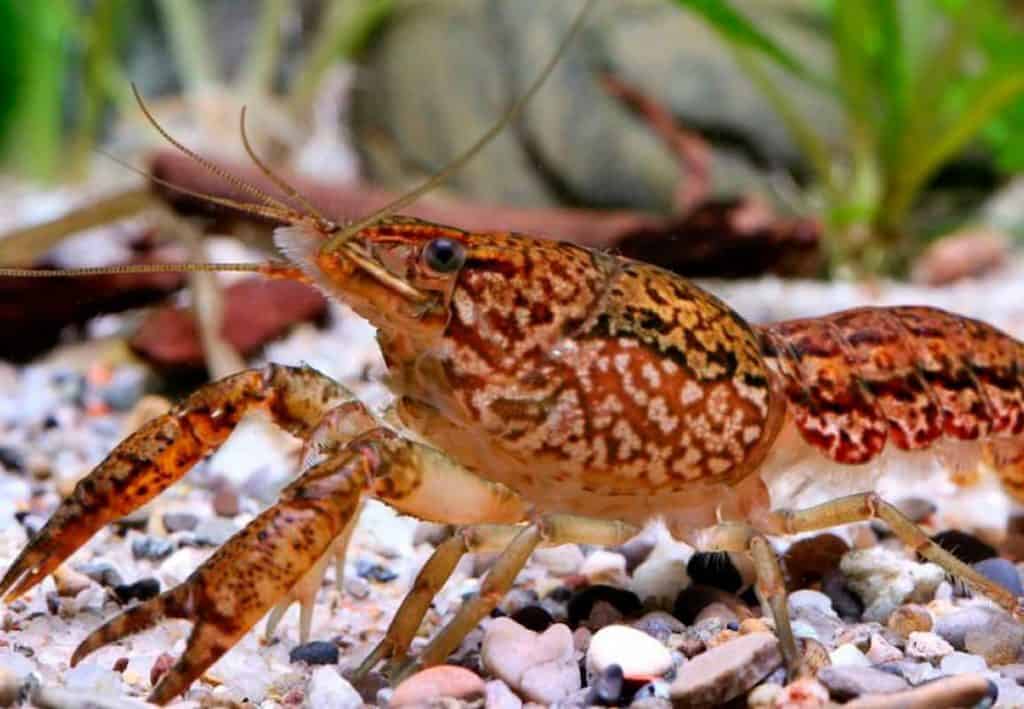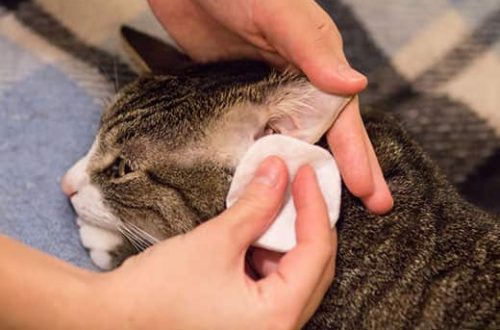
Keeping marble crayfish in an aquarium: creating optimal conditions
Marble crayfish is a unique creature that everyone can keep at home in an aquarium. They reproduce quite simply, one might say, by themselves, like plants. All individuals in marble crayfish are females, so their reproduction occurs by partogenesis. Thus, one individual at a time brings out absolutely identical babies similar to themselves.
Contents
Keeping marble crayfish in an aquarium
Such unusual inhabitants in the aquarium as marble crayfish are absolutely not whimsical, and it is a pleasure to observe their life and behavior. Medium in size individuals have a length of 12-14 cm. Due to their small size, many owners purchase miniature aquariums for them. However, it is much more convenient to keep them in spacious aquariums, as they leave a lot of dirt behind and tight spaces will get dirty quickly. This is especially true for an aquarium for several crayfish.
Choose an aquarium of at least forty liters for keeping one individual. Although it should be borne in mind that an aquarium of this size is quite difficult to care for. It is believed that the optimal size of the aquarium for keeping crustaceans is 80-100 liters. In such an aquarium, your pets will feel more free, they will become more beautiful and bigger, and the water will remain clear for a long time.
As a primer, preference should be given to the following materials:
- sand
- fine gravel.
This soil is ideal to move marble crayfish, where they find food faster, and cleaning the aquarium will be much easier and faster. Add all kinds of hiding places to the aquarium: caves, plastic pipes, pots, various driftwood and coconuts.
Since marble-colored crayfish are river inhabitants, a lot of garbage remains from them. Be sure to install powerful filters, while there should be a current in the aquarium. Aeration is considered an additional plus for finding crayfish in an aquarium, since crayfish are quite sensitive to the oxygen saturation of the water.
Close the aquarium carefully, especially if external filtering is used. Crayfish are quite agile creatures and can easily escape from the aquarium through the tubes, and then quickly die without water.
The only plants that can be used in an aquarium with these crustaceans are algae floating on the surface or in the water column. The rest will be quickly eaten, cut or spoiled. For a change, you can use Javanese moss – they also eat it, however, less often than other plants.
Your pet will shed from time to time. How to recognize the molting period? Before this process, crayfish usually do not feed for one or two days, and also hide and hide. Do not be afraid if you notice his shell in the water. Throwing away the shell is also not worth it, cancer will eat it, because it contains calcium that is useful and necessary for the body. After molting, they are all quite vulnerable, so it is worth providing the pet with all kinds of shelters that will allow the pet to sit quietly and wait for a certain time.
How to feed marble crayfish at home
Since crayfish are unpretentious creatures, their feeding will not be difficult for the owners. In a word, they eat almost everything that they reach. Mostly these are herbal products. Food for them can be divided into two groups:
- Herbal tablets for catfish.
- Vegetables.
From vegetables, corn, zucchini, cucumbers, spinach, lettuce leaves, dandelions are suitable. Before serving vegetables or herbs, the products must be doused with boiling water.
Although the main food is a plant foodThey also need protein. In order to fill their need for protein, it is worth serving shrimp meat, fish fillets, pieces of liver or snails once a week. Diversify the diet and your pets will delight you with normal molting, good growth and beauty.
Neighborhood in the aquarium
Marble adults get along well with fish, however, large and predatory fish as a neighborhood are not suitable for them. Predators will prey on crayfish, and small fish are completely harmless to adults.
Also don’t keep them. in the same aquarium with fishthat live at the bottom. Any catfish – tarakatums, corridors, ancitruses and others – will not be suitable as neighbors, since they feed on fish. Slow fish and fish with veil fins are also not the best neighborhood, as crayfish can break their fins and catch fish.
Inexpensive livebearers (guppies and swordsmen, various tetras) are considered the best neighbors for such pets. Keep in mind that crustaceans can also catch these fish, although this will happen extremely rarely.





